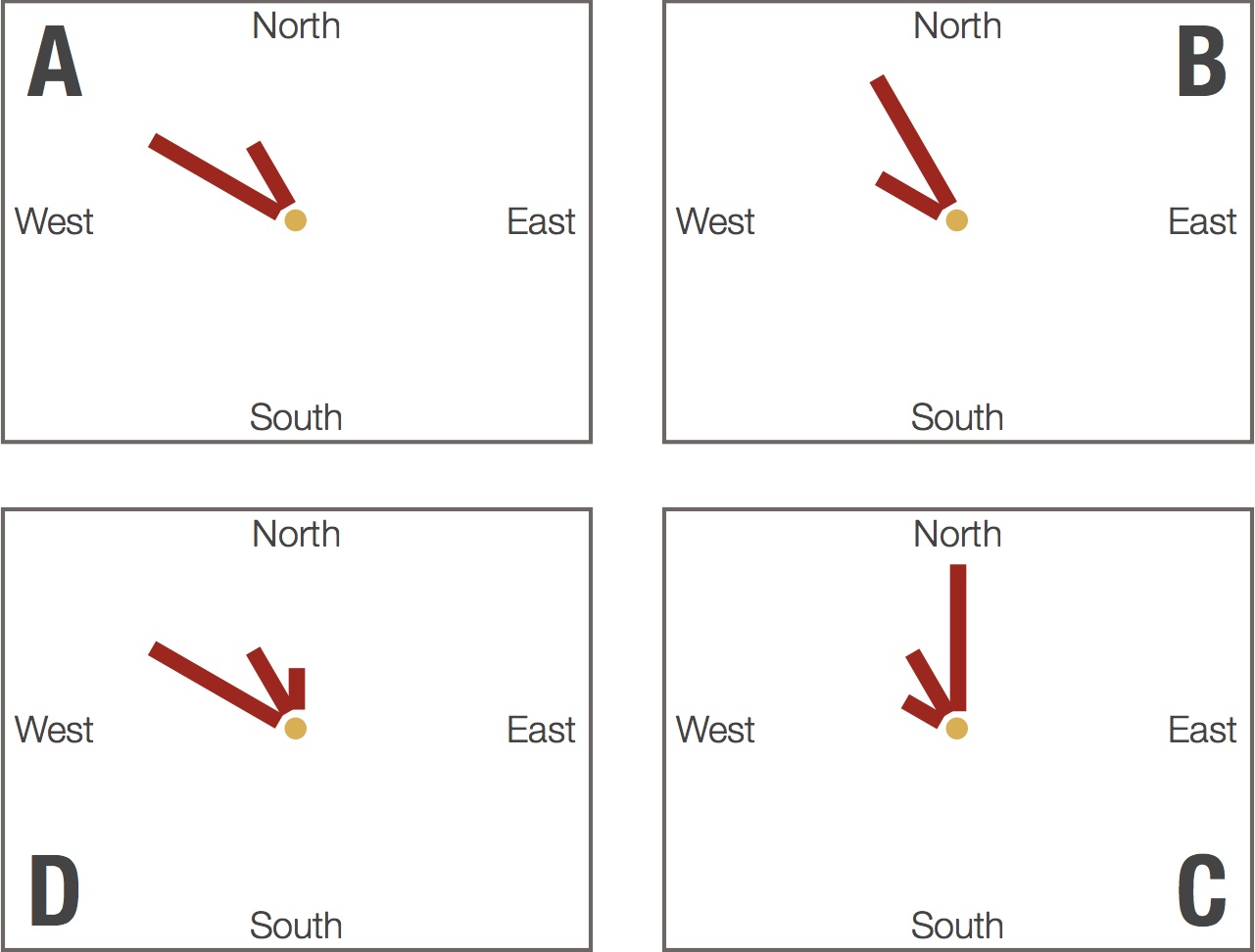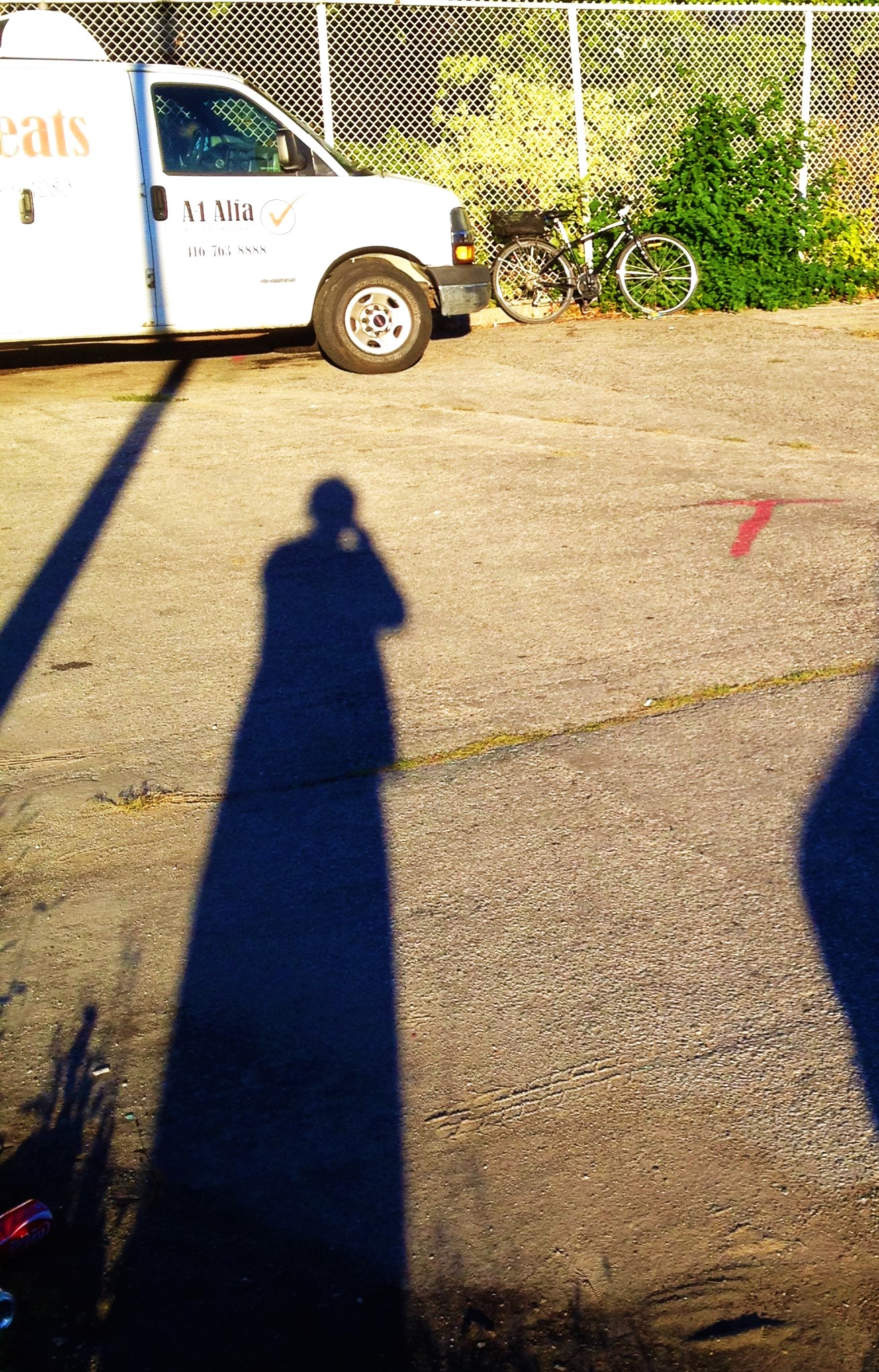September 18, 2016 Filed in:
ArticlesRoberta Tevlin, OAPT Newsletter Editor, Teacher Danforth CTI
roberta.tevlin@tdsb.on.ca
Edited by Tim Langford
It is difficult to get students to make astronomical observations when you live in a large city with lots of light pollution. However, there is one object that all of your students have seen, but probably not observed carefully — the Sun! I start my grade 9 astronomy unit by having my students observe the shadows formed by Sun.
The difference between seeing and observing
There is a tall lamppost in the parking lot at my school. I tell my students that I painted over its shadow on the surface of the parking lot at 8:00 AM, 10: AM, and noon. Before taking the class outside, I ask students to draw what they think the painted shadows will look like. I want them to have a chance to analyse and discuss the problem in order to make better predictions. Their answers are usually unsurprisingly wrong. We often don’t pay close attention to everyday experiences. Moreover, this is a very difficult problem involving analysing 3-D projections. I find that some multiple-choice questions can help.
Breaking the big problem into smaller pieces
The following four diagrams are wrong, but one of them is better than the others. Which one?

Students usually realize that the sun rises in the east; thus they often quickly eliminate answers B and C must be wrong. In the northern hemisphere the sun always appears somewhat towards the south. Therefore the shadows must be towards the north, eliminating answers C and D.
Having taken up the first question, students accept that the shadows are towards the north and west in the morning. However, the top left diagram is still wrong. Why? Many students will recognize that the length of the shadows should change and now they need to decide which of the next four diagrams is best.

As the time gets closer to noon, the sun is higher overhead and closer to the south. This means that the shadows should become shorter and closer to the north. That eliminates answers B and C. The final selection is based on whether or not there is a third shadow at noon. Most of my students think that there isn’t one despite what they have seen all their lives. They have memorized what they have been told, in phrases like “The Sun is overhead at noon.”
Using models to test the analysis
I have a globe with a not-to-scale lamppost on Toronto and another on the equator. I hold a bright light above the equator and slowly rotate the globe while the students observe the shadows of the lampposts. Next, each group is given large Styrofoam balls, toothpicks and flashlights to explore further.

 Checking predictions
Checking predictions
Finally, we go out to the parking lot to look at the shadows. In the picture below you can see my shadow and the lamppost’s shadow to the left. It is 7:30 am and the shadow is really long. To the right you can see a pink ‘T’ marking the end of the shadow at 8:30.

The painted lines confirm the analysis that students made in the classroom. However, there is still something unexpected. The real shadow is a lot longer than one would expect from the pattern formed by the painted ones. This is because I painted the shadows in the summer. This introduces the idea that the pattern changes with the seasons.
Time for some kinesthetic learning
When we get back in the classroom I have the students sit facing south and have them point to where the Sun is at noon. A few students still point straight up! I then have them point to where the Sun is at 10 AM and make sure that they are pointing a bit to the east and lower. Eventually they trace the path of the Sun from sunrise to sunset. Then I have them do this for December and for June. Finally, I have them do this for Mexico and for the Northwest Territories.
This combination of diagrams, models, discussions, body movement and real observations will help the students to learn this very challenging material. After this lesson they are better prepared to deal with the phases of the moon, planetary motion and even the Big Bang Theory!
Tags: Astronomy, Light, Pedagogy





